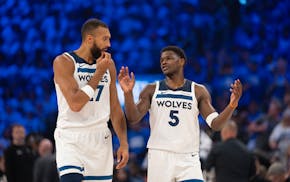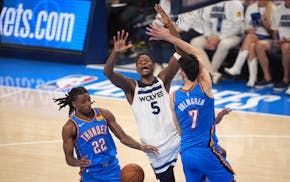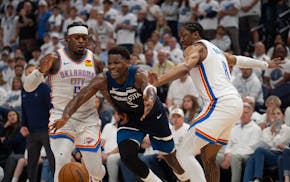Minneapolis played host to the women's Final Four in 1995. Last weekend, after 27 years, the women's Final Four returned to Target Center.
All three games were sellouts. Television advertising for ESPN's broadcasts sold out well in advance. Four passionate fan bases crowded the skyways and massed to greet players as they arrived at the arena.
Team USA practiced at the Courts of Mayo Clinic, and many Lynx players came to Minneapolis for the weekend.
Minneapolis is good at putting on big events, even when the weather stinks. This weekend, the NCAA (despite all of its flaws), the University of Minnesota and the teams themselves put on a wonderful show. The NCAA set a record for credentials issued for a women's Final Four, meaning the media work room was jammed, especially before Stanford and Louisville departed.
Let's not wait another 27 years for the women's Final Four to return.
Local media noted that Minneapolis has become a beacon of women's basketball, from Hopkins High to the Minnesota Lynx's persistent excellence. These stories might have sounded self-congratulatory if they hadn't been echoed by national media and reporters from other markets.
Women's basketball currently boasts two powerful arguments for its promotion:
1. It's profitable. The more women's games are treated like men's games — with easily accessible broadcasts, pregame and postgame shows, and print journalists breaking down strategies and matchups — the more money the games produce.
Ratings are up. Attendance is up. And women's basketball has accomplished this without full support from mainstream media. Television executives are starting to understand that they have left millions of dollars on the table by reacting to slowly to this trend.
2. The rise of women's basketball and other women's sports is important, because women are important. Dawn Staley becoming the first Black Division I coach to win multiple national titles has given her a platform that she has earned in many other ways. She is a role model, and this role model, who has developed a diverse and fiercely loyal fan base in South Carolina, now has an even more powerful megaphone.
Paige Bueckers — yes, that's right, she's from Hopkins — also uses her status as a young superstar to speak about social justice and bigotry.
Women's basketball is like one of those superfoods that's good for you but tastes good anyway.
Before this weekend, the argument that the women's and men's Final Fours should be held in the same place on the same weekend might have made some sense.
Basketball fans in town for the men's games would have been encouraged to attend the women's games, and media in town for one would have been forced to do so by their bosses. It could be a basketball festival stretching over four days.
The latest Minneapolis Final Four provided evidence that the women are better off building their own brand. They can sell out an arena, and while they might someday be able to sell out a stadium, the games are better, more intimate, more rewarding to fans when they are played in a true basketball venue.
The worst seats at Target Center are bad seats. The worst seats in a stadium are an insult to the ticket buyer.
The weekend was a success by any measure. The games also revealed a major flaw in the world of women's basketball.
The WNBA features 12 teams and limited rosters. Some of the best players competing for a championship this weekend will have no or little chance of even making a WNBA roster.
Remember, Iowa's Megan Gustafson was the college player of the year in 2019. Dallas chose her with the 17th pick in the draft, and she was cut and has struggled to find playing time in the league.
Asked if most of the players in the Final Four would have difficulty making a WNBA roster, Lynx coach and GM Cheryl Reeve said, "Those are just the facts."
The game has grown in popularity. Now it should grow at its highest level.
Souhan: For Lynx star Napheesa Collier, 'Phee' is just fine

Souhan: Will the Wolves trade for Kevin Durant? Should they?

Souhan: If Edwards is a franchise player, he needs to act and play like it

Souhan: Wolves' weak performance in Game 5 invites change, so don't let it shock you



